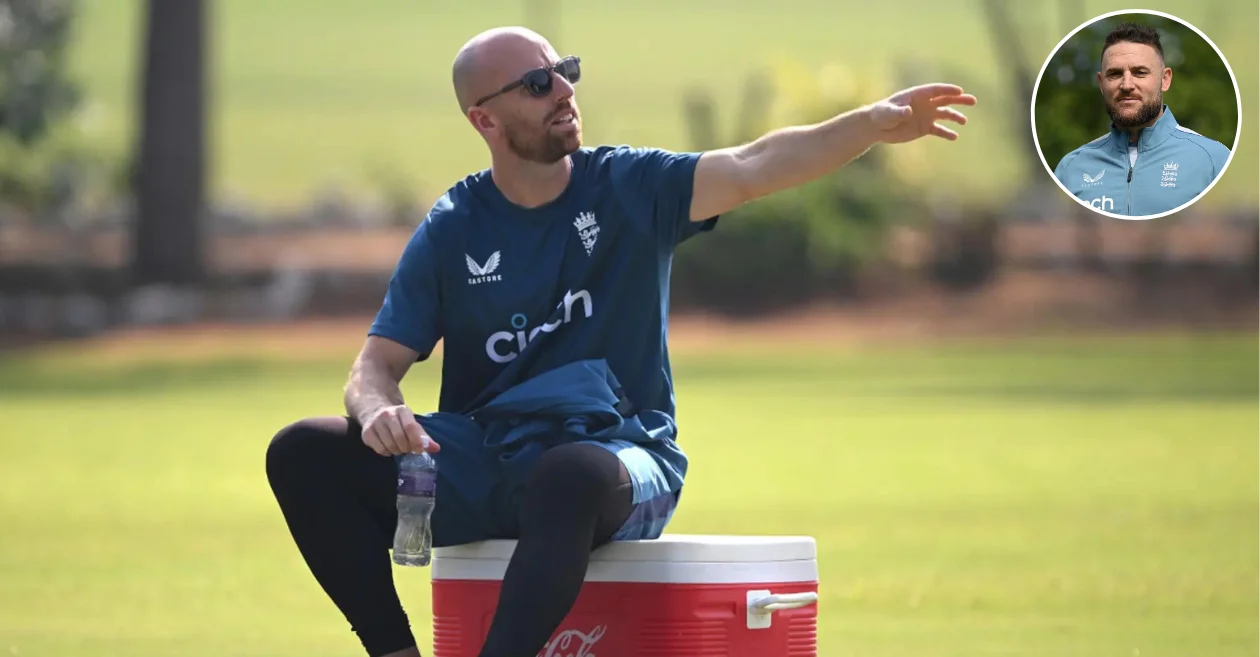Table of Contents
The absence of star spinner Jack Leach was deeply felt by the England cricket team during the second Test against India in Vizag. Forced to sit out due to a knee injury, Leach’s shoes were filled by the young spinner Shoaib Bashir, who, despite showing promise, couldn’t quite make the impact needed to prevent a massive defeat for England. Now, as the series stands level, all eyes are on Leach’s potential return for the crucial third Test in Rajkot on February 15.
Brendon McCullum shares insights about Jack Leach’s injury
Adding to the suspense surrounding Leach’s participation, England’s head coach, Brendon McCullum, recently provided a significant update on the spinner’s injury. McCullum acknowledged that Leach’s injury hasn’t shown signs of improvement, describing it as still “pretty inflamed.”
Despite the challenging conditions, McCullum acknowledged the fact that the spinner could still go against all odds to play the upcoming match. He also highlighted Leach’s resilience and spirit, commending him for pushing through in the first Test.
“It is still pretty inflamed, but I don’t really know because he (Jack Leach) has been a crook. His knee is pretty bad though, and it was remarkable he got through what he did in the first Test match,” McCullum told Belfast Telegraph.
Also READ: England star Joe Root names two greats of modern-day cricket
Leach’s first test heroics
Leach’s performance in the first Test showcased his dedication to the team. Despite the persistent pain and inflammation in his knee, Leach managed to contribute significantly with two wickets. McCullum’s words underscore the remarkable effort put forth by the veteran spinner in the face of adversity.
The dilemma for England
As England prepares for the Rajkot Test, the uncertainty surrounding Leach’s fitness poses a significant dilemma. While the spinner himself may have the desire to contribute to the team, the severity of his injury raises questions about his ability to perform at his best, and the team management faces the challenge of making a strategic decision that balances the need for victory with the long-term well-being of their key player.
